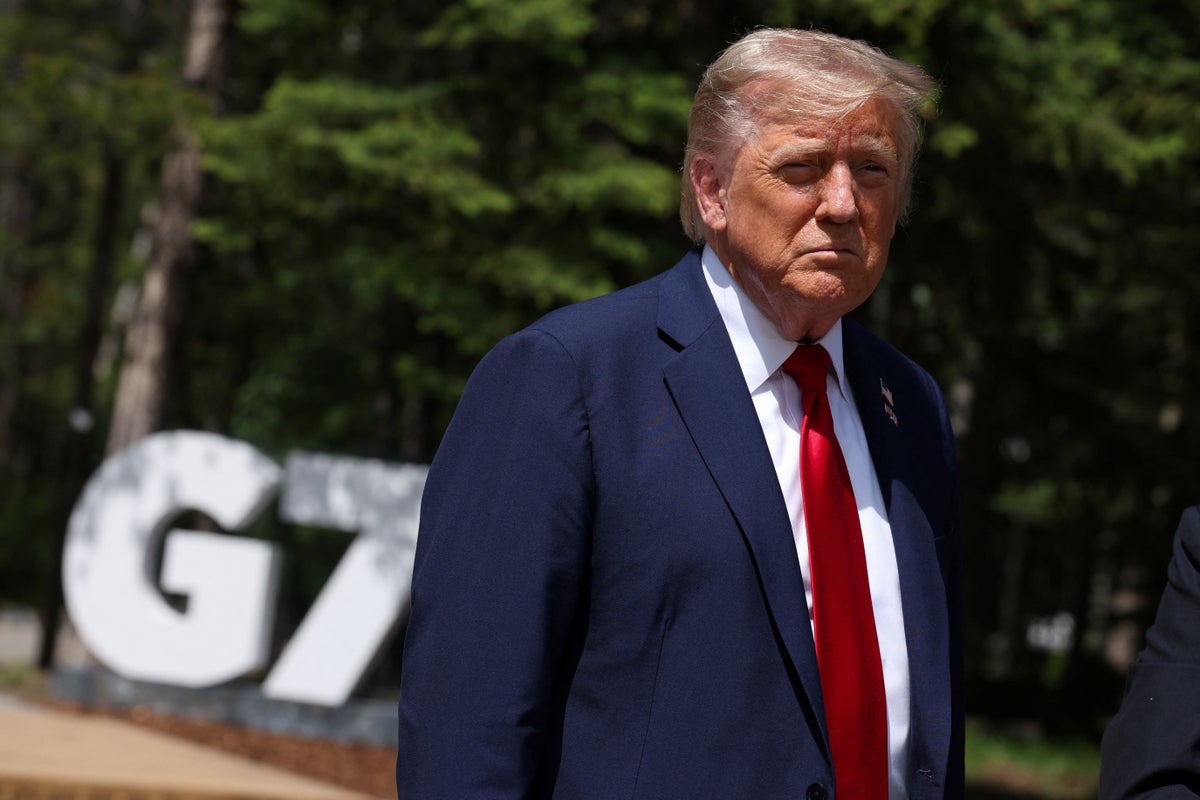President Donald Trump declared on Tuesday that Iranian forces must unconditionally surrender, hinting at the potential targeting of Iran’s Supreme Leader, Ayatollah Ali Khamenei, if the Islamic Republic continues to threaten Israeli citizens or American personnel in the region.
In a post on Truth Social, Trump asserted that the U.S. “knows exactly where” Khamenei is located and labeled him as an “easy target” currently operating from a secure position. “We are not going to take him out (kill!), at least not for now. But we don’t want missiles shot at civilians, or American soldiers,” Trump stated, expressing his frustration by saying, “Our patience is wearing thin. Thank you for your attention to this matter!”
Shortly afterward, he reiterated his demand for surrender by posting the phrase “UNCONDITIONAL SURRENDER!”
This outburst came shortly after Trump noted the superiority of Israeli military resources, which he claimed surpassed Iran’s defensive capabilities. He remarked that the American manufactured military equipment used by Israel had established “complete and total control of the skies over Iran.”
The Trump administration has persistently denied any involvement in Israel’s recent strategic campaign against Iran’s nuclear capabilities, which has included destroying nuclear sites and targeting key Iranian figures. Following the initiation of Israeli strikes last week, U.S. officials, including Secretary of State Marco Rubio, emphasized that American forces were not engaged in these operations and remained on a defensive footing.
However, Trump’s escalating rhetoric and the increased U.S. military presence in the region suggest a possible shift towards a more active American role in efforts to diminish Tehran’s nuclear threat.
Israeli forces have reportedly made significant advancements in targeting Iranian facilities linked to nuclear weapons development, but the Fordow enrichment facility, deep within a mountainous region near Qom, remains a significant challenge. This facility’s underground location would require the use of heavy bombers equipped with specialized munitions to successfully neutralize it.
Although Israeli forces lack these capabilities, the United States does possess the B-2 stealth bomber capable of deploying Massive Ordnance Penetrators designed to breach hardened structures like Fordow.
These developments follow Trump’s abrupt departure from the Group of Seven summit in Alberta, where he cited the escalating situation in the Middle East. Earlier that day, Trump expressed optimism about reaching a diplomatic resolution to Iran’s nuclear ambitions despite Israel’s military actions. “I think Iran basically is at the negotiating table where they want to make a deal, and as soon as I leave here, we’re going to be doing something,” he remarked.
As events unfolded, U.S. defense officials ordered the USS Nimitz carrier group, including guided missile destroyers and support vessels, to reposition from the South China Sea to join the USS Carl Vinson strike group in the Arabian Sea. This coordinated military buildup also included the relocation of U.S. Air Force refueling planes to Europe and the movement of destroyers closer to Israel, as security alerts prompted military families at U.S. bases in the Middle East to be granted permission to return home for safety.
Additionally, the State Department updated its travel advisory for Israel, Gaza, and the West Bank to reflect a “do not travel” warning amid rising casualties on both sides of the escalating conflict. “The security situation in Israel, including Tel Aviv and Jerusalem is unpredictable,” the advisory stated, urging U.S. citizens to remain alert to potential security threats, including missile attacks and drone incursions.

